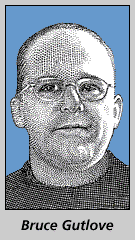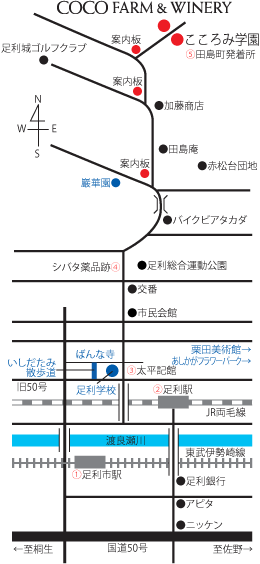Bruce Gutlove of Coco Farm
POSTED ON 02/06/2008
At first Bruce Gutlove wasn’t sure if it was his friends’ idea of a joke to set him up for the funny farm. After selling them grapes and then visiting Coco Farm in rural Japan, Matt and Fred Cline from Sonoma’s Cline Cellars recommended Bruce as the man capable of modernising this unusual back-of-beyond winery served by a community of mentally disabled students. With a University of Davis background and a CV that included stints at Cakebread, Mondavi, Trefethen and Merryvale, it didn’t take the freewheeling Napa Valley winemaker long to say ‘thanks, but no thanks’ to the job. The school wasn’t giving up. When it sent someone to San Francisco to meet Bruce, he was sufficiently moved by their dogged pursuit to take up a six-month post.
That was back in 1989. Had head ruled heart, Bruce might have done a 360 degree about turn and headed straight back home after those first six months. Sharing a dormitory with mentally disabled students wasn’t a problem, but the winery was. Using rejected table grapes, its wines were ghastly and sweet. Its steep hillside vineyard used an antediluvian Japanese pergola trellising system known as hiradana, and with a metre of rain in summer, the weather conditions were so atrociously sticky that a decent wine could apparently only be made there when hell froze over. Yet, as a gaijin, a foreigner who’s never fully accepted, Bruce strongly identified with the mission of Noboru Kawada to provide therapeutic outdoor work for the mentally disabled, a pariah class officially classified as untrainable and swept under the carpet in Japan’s ultra-conformist society.
 How to Get to Coco Farm
How to Get to Coco Farm
The school, Cocoromi, meaning ‘challenge’, was founded by Noboru Kawada in 1969 in Ashikaga an hour north of Tokyo by the bullet train that slices through the Kanto Plain’s tufty tapestry of acid green rice paddies. The winery buildings and café restaurant sit beneath a steep slope into which a 2.7 hectare vineyard first planted in the 1950s is carved out of Japanese cedar forest. ‘Disease pressure is considerable here’, says Bruce, as steamy sub-tropical rain teems down to prove his point. First he set out to update the equipment and sanitation, then he brought down the yields and harvested riper. With advice from the Australian viticultural guru Richard Smart, he changed the trellising to Geneva Double Curtain, adding norton, tannat and cabernet sauvignon vines to the muscat bailey A vines. More recently, petit manseng, gros manseng and albariño have been planted plus some new koshu vines, Japan’s indigenous pink-skinned variety.
Bruce admits that harvest can be on the chaotic side. Someone might fall and knock the next person over so they all tumble in a Jack and Jill heap down the hill, bunches of grapes and all. But with views of the mountains of the Chichibu region and the prospect of a hot bowl of ramen for lunch, the students love the orderly outdoor work, sticking like glue to the most tedious of tasks. Whether ringing a bell at the arrival of hungry crows, pulling the bottom two leaves off every bunch or painstakingly tying rain-protective bits of waxed paper to every bunch of grapes, their perseverance is remarkable. In the winery too, they can be happy watching the bottling line for hours on end to catch minimal quantities of cork dust, even if on occasions a label might get stuck on upside down.
Coco Farm’s Novo, a sparkling wine made from riesling lion, was poured by Shinya Tasaki, the Japanese sommelier, for the G8 summit in 2000 in Okinawa. Yet Bruce is realistic about the limitations of winemaking here and is not easily carried away by a growing vogue for Japanese wine in Tokyo restaurants and bars. In the case of koshu, a relatively neutral variety that he calls ‘the workhorse of the industry’, he recognizes the symbolic value of what is effectively Japan’s main indigenous variety (it’s reckoned by the experts to be 95 per cent vinifera). From this tough, pink-skinned variety, he makes a light, scrumpy-like, ‘warts-and-all’ Koshu F.O.S. (Fermented on Skins), and a convincingly raisined sweet vinsanto, Echi di Zoccoli d’Asino, or clipclop of the donkey.
In order to get enough fruit to produce the volume he felt Coco Farm needed to reach a critical mass (around 15,000 cases), Bruce wanted to plant 25 - 30 hectares of vineyards. It was impossible because of high land prices. So he travelled throughout Japan, signing up growers who could supply him with premium varieties and plant new vines to his specification. With a source of grapes from seven different prefectures including Japan’s cool, northernmost island Hokkaido, he now makes a wide range of wines including a delicate Cocoromi Series Hokkaido Kerner, a Cocoromi Series Kurisawa Blanc (a blend of silvaner, pinot gris, gewürztraminer and kerner) and a rich, barrel-fermented Yama no Chardonnay from mountain vineyards in Yamagata. Next year is Bruce’s 20th year at Coco Farm. Now happily married to Ryoko, the Japanese woman he met in Tokyo in 1991, there’s no sign of him returning to California any time soon. His students are banking on it.
For more information: http://cocowine.com/english/e-access.html

